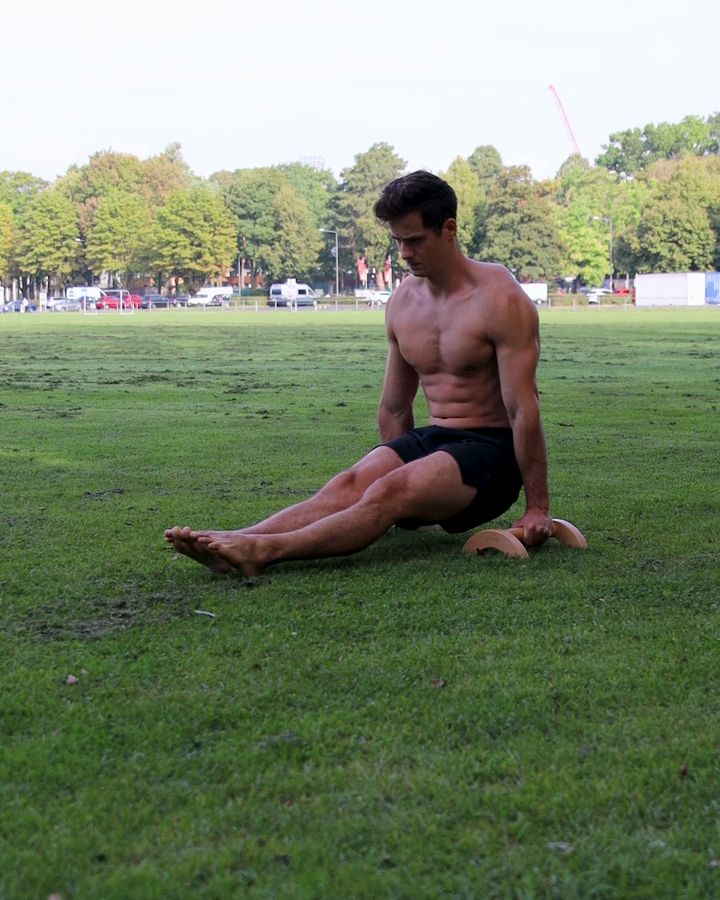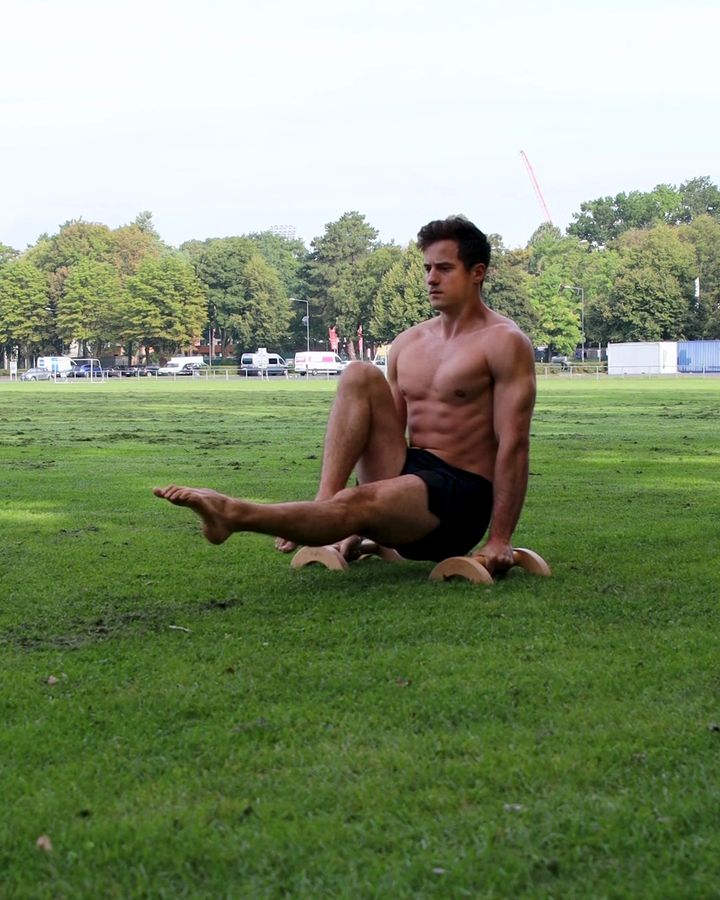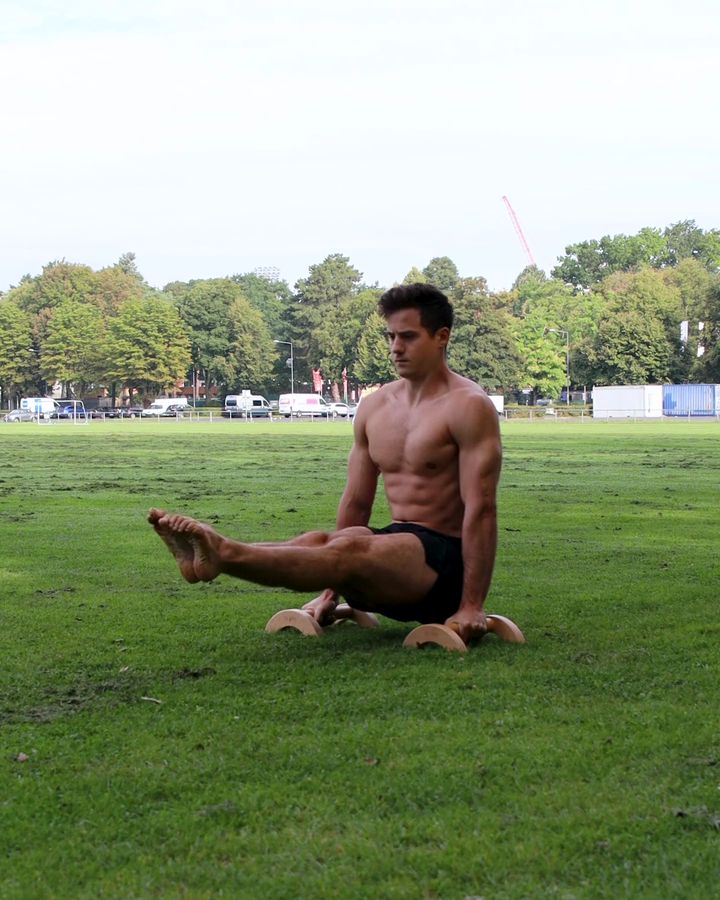Assisted L Sit
In the supported L-Sit, the legs are extended with the heels resting on the ground. Compared to the regular L-Sit, where the legs are fully lifted off the ground, the supported version is ideal for beginners, as it requires less core strength while still preparing the upper body for the proper L-Sit. Another easier variation is the Tuck L-Sit, where the knees are drawn toward the chest.
Necessary equipment
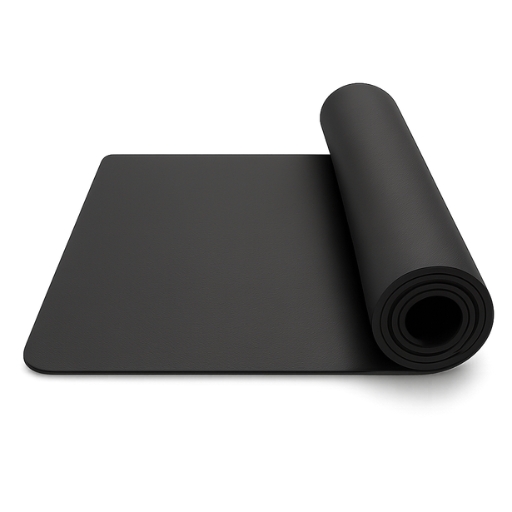
Assisted L Sit - the correct execution
- Start sitting on the floor
- Press your hand palms into the floor
- Push your shoulders down and extend your arms completely
- Lift your glutes off the floor
- Your legs remain straight
- Your heels are in contact with the floor
The exercise Assisted L Sit is intended to be used as a hypertrophy exercise.
Which muscles are trained by Assisted L Sit?














Primary trained muscles for Assisted L Sit
Abs - The rectus abdominis, also known as the "abs," runs vertically along the front of the abdomen. It is responsible for bending the torso forward, such as during sit-ups, and lifting the pelvis. This muscle stabilizes the torso, supports the spine, and helps maintain good posture.
Front Delts - The front part of the deltoid muscle, also known as the anterior shoulder, is located at the front of the shoulder. It is primarily involved in the forward movement of the arm, such as lifting the arm forward. It also assists in the internal rotation of the arm. This muscle is engaged in activities that involve lifting objects in front of the body or pushing forward.
Secondary trained muscles for Assisted L Sit
Quadriceps - The quadriceps femoris is the large muscle at the front of your thigh. It extends your knee.
Triceps - The triceps brachii muscle is located at the back of your upper arm. It extends your arm at the elbow and also helps move the arm backward.
Latissimus - The latissimus dorsi is a large muscle in your back that helps you pull your arm down and back. It also supports breathing and stabilizes the spine.
Rear Delts - The rear part of the deltoid muscle, also known as the posterior shoulder, is located at the back of the shoulder. It is responsible for the backward movement of the arm as well as external rotation. This muscle is particularly engaged during activities like rowing or pulling the arm back. The rear shoulder supports posture and helps pull the shoulder blades back, contributing to shoulder stabilization.
Alternative variants of Assisted L Sit:
Assisted L Sit with gym rings
Compared to the supported L-Sit on the ground, where the heels touch the floor, the supported L-Sit on gymnastics rings requires more stability and control. The unstable base of the rings places additional demand on the shoulders and upper body. The lower the rings are positioned, the higher the difficulty level, as it takes more strength to keep the rings close to the body.
Necessary equipment
Assisted L Sit with gym rings - the correct execution
- Take the support hold into the rings with arms outstretched
- Pull your shoulders down
- Palms facing your body
- Legs are extended
- Hold tension in the abdomen throughout
Assisted L Sit with parallettes
The supported L-Sit on parallettes is somewhat easier compared to the floor version because the elevation of the parallettes means you don’t have to push yourself as high. Unlike gymnastics rings, which add an extra challenge due to their instability, parallettes are stable and don’t require additional balance. Additionally, the neutral grip on the parallettes is more comfortable for many people than pressing the flat hand against the floor.
Necessary equipment
Assisted L Sit with parallettes - the correct execution
- Place the Parallettes parallel to each other and at shoulder width on a firm surface
- Sit between the Parallettes with legs extended
- Grab the Parallettes tightly and keep the arms extended
- Powerfully push up through the arms so that your glute does not touch the floor
- Make sure your glute is positioned between hands
- Keep your shoulders low and actively push them away from your ears
- Try to hold as much body weight as possible with your arms
Similar exercises to Assisted L Sit
One Leg L Sit
The One-Leg L-Sit on the parallettes is a challenging exercise that primarily targets the abdominal muscles, hip flexors, and supporting muscles. In this exercise, the athlete assumes an L-position, keeping one leg straight while bending the other. It requires a high level of body tension, strength, and balance.
The one-legged variation serves as a preparatory exercise for the classic L-Sit, where both legs are extended. Holding this position engages the abdominal muscles even more intensely.
An even easier progression is the Tuck L-Sit, where both legs are bent and pulled close to the body. This reduces the lever arm, making it easier to hold the position while still engaging the core and supporting muscles.
Knee Raises on parallel bars
Knee raises primarily train the abdominal muscles and hip flexors, similar to the L-Sit or leg raises. During the exercise, the knee is pulled up to the chest while keeping the upper body upright. This exercise can be performed while standing or hanging from a pull-up bar.
Knee raises can be done with different equipment. In the parallel bars variation, the arms stabilize the body, which intensively engages the shoulder and core muscles.
L-Sit
The L-sit is a well-known exercise from gymnastics that is also very popular in calisthenics. It requires strong abdominal muscles, some flexibility in the back of the legs, strength in the hip flexors, and stability in the shoulder girdle. Depending on the training equipment used for the L-sit, the exercise can be easier or more difficult.
This could also be interesting
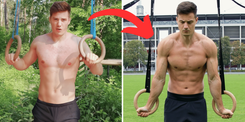
Calisthenics Body Transformation – How to Build a Strong, Lean, and Athletic Physique
Transform your body with Calisthenics! Build muscle, burn fat & achieve a shredded physique with bodyweight training. See real before & after results!
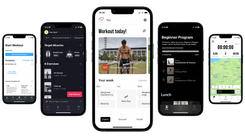
The Best Fitness Apps in 2025: Our Top 10 Recommendations
Don’t miss the best fitness apps of 2025: surprising favorites, free options, and perfect tools for your workouts. Find the ideal app today!
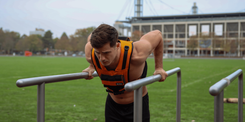
Complete Calisthenics Skills List – 40+ Exercises from Beginner to Pro
Which calisthenics skills should you learn first? And which ones will really help you progress? In this article, you’ll find a complete list of over 40 exercises – from the very basics to the toughest moves for professionals. Each exercise comes with instructions, so you can immediately integrate them into your training.
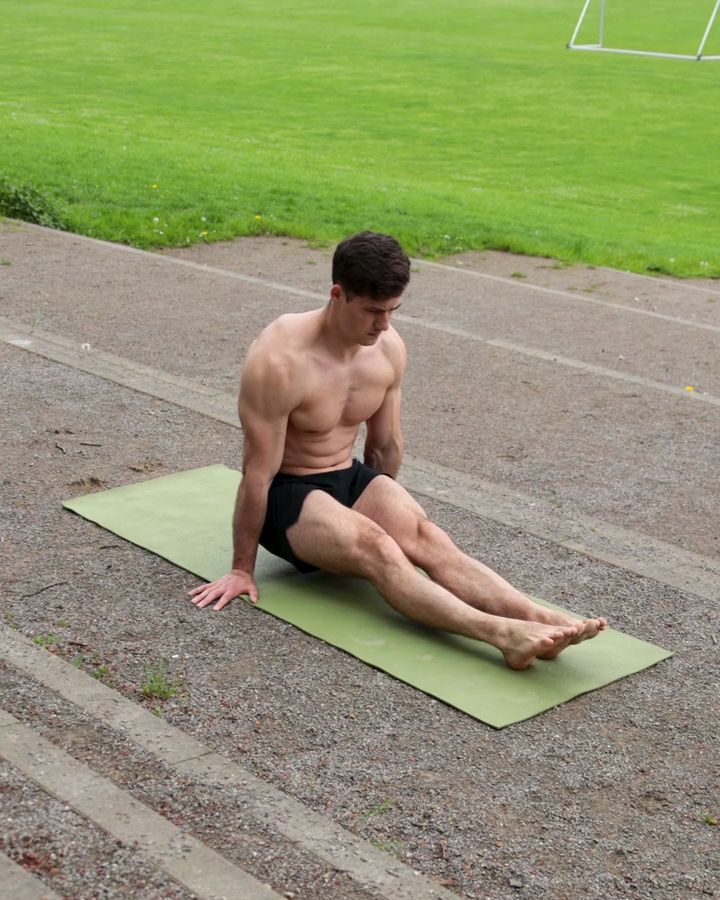
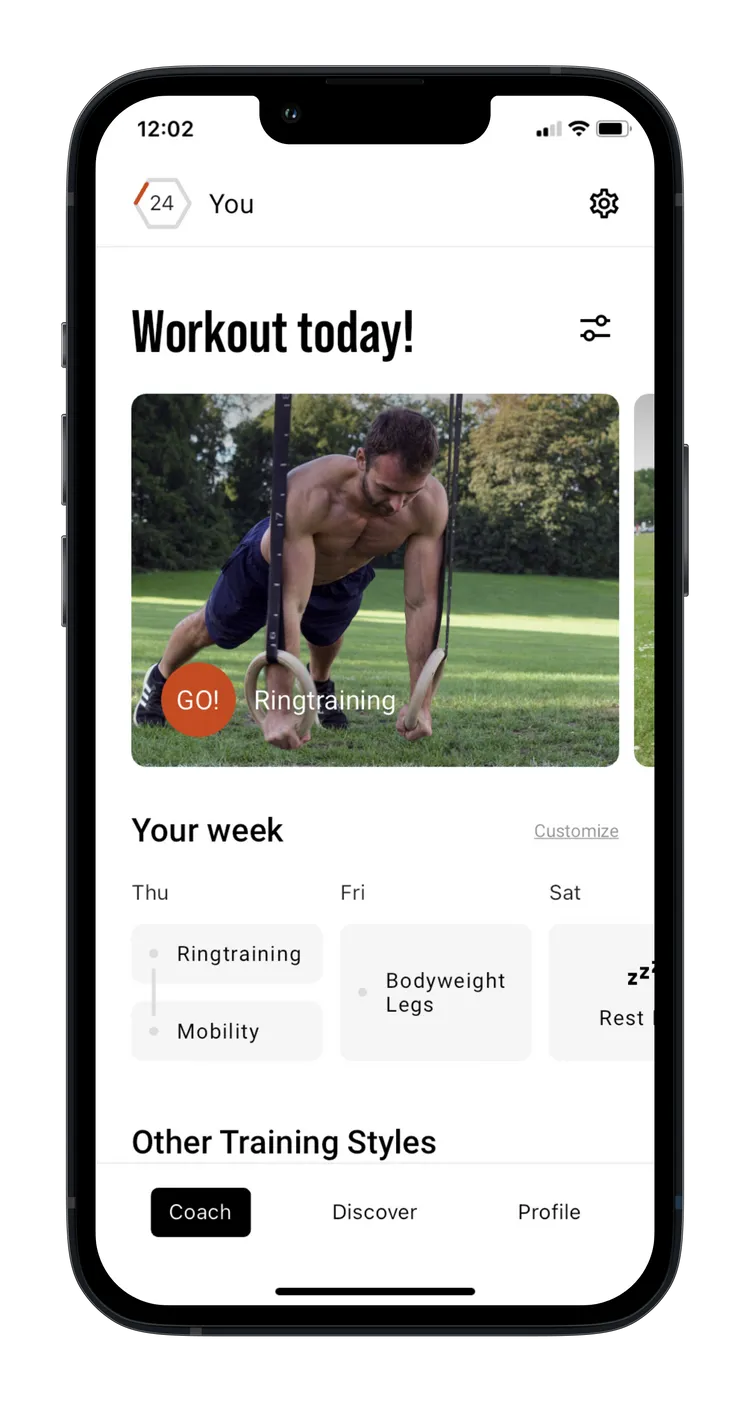

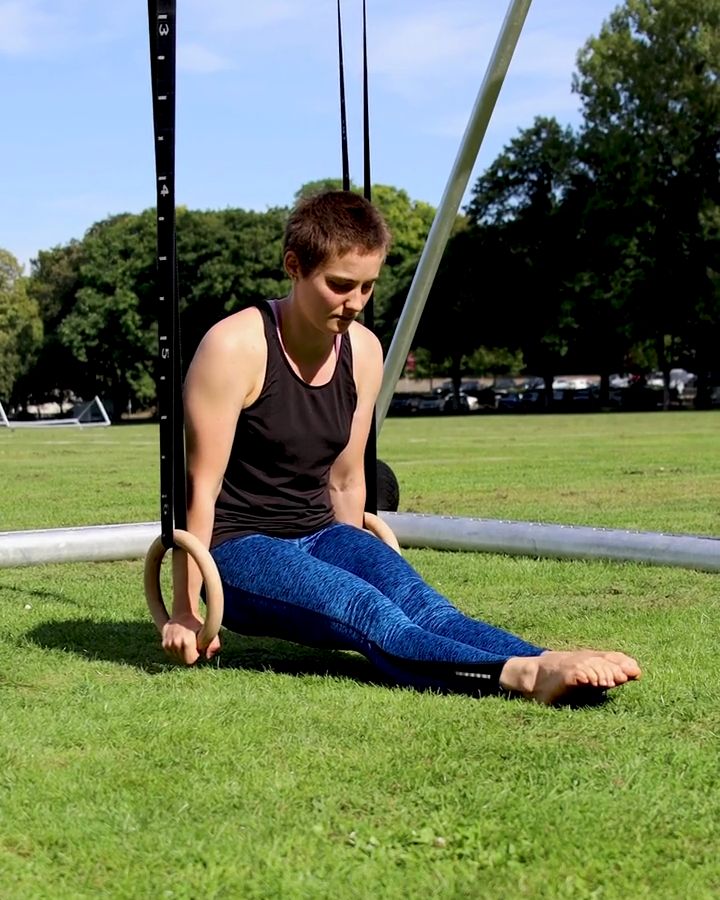
~e5724973d14549c23ea8a586b5736b36.png?alt=media)
